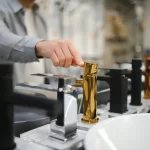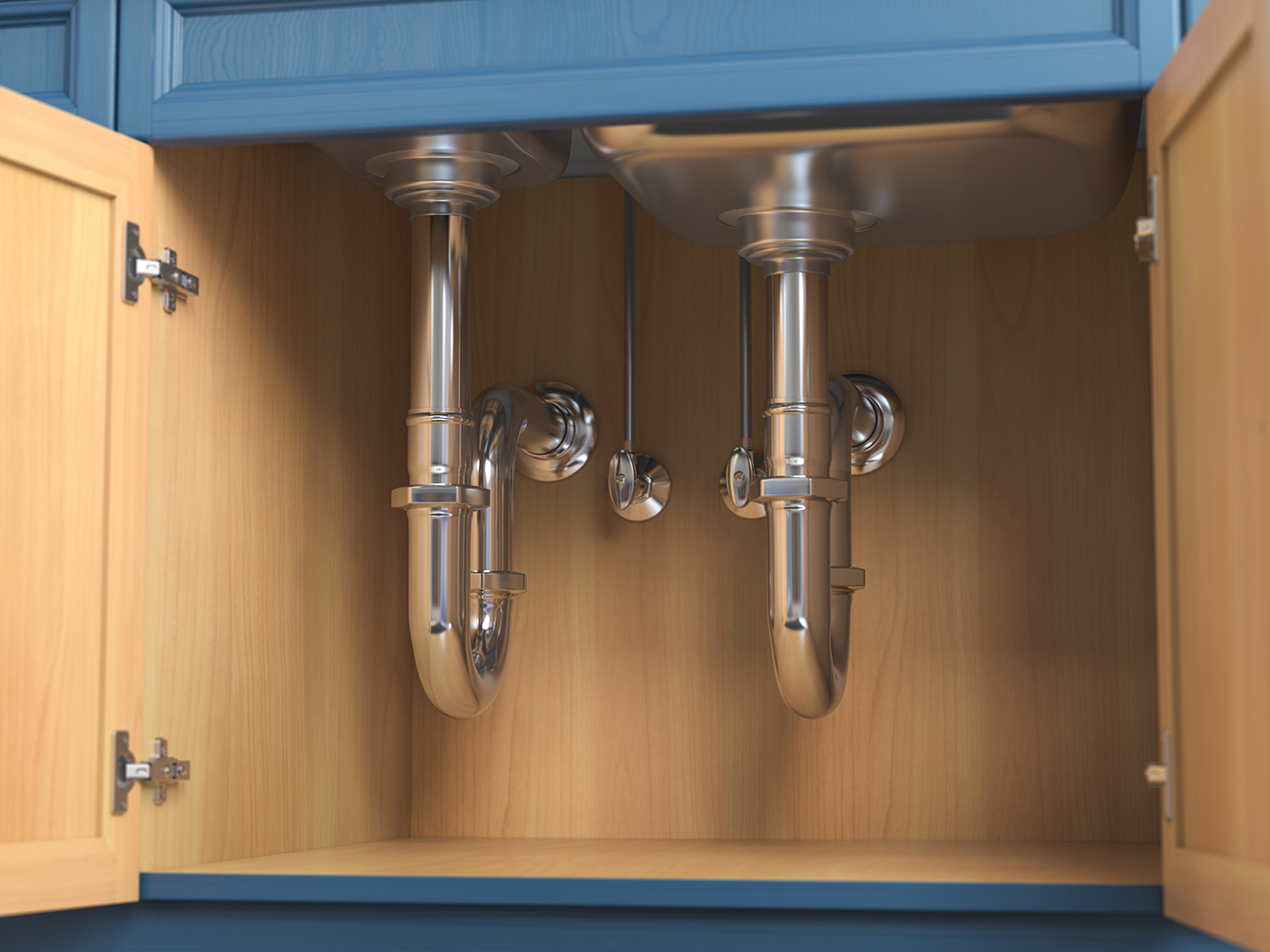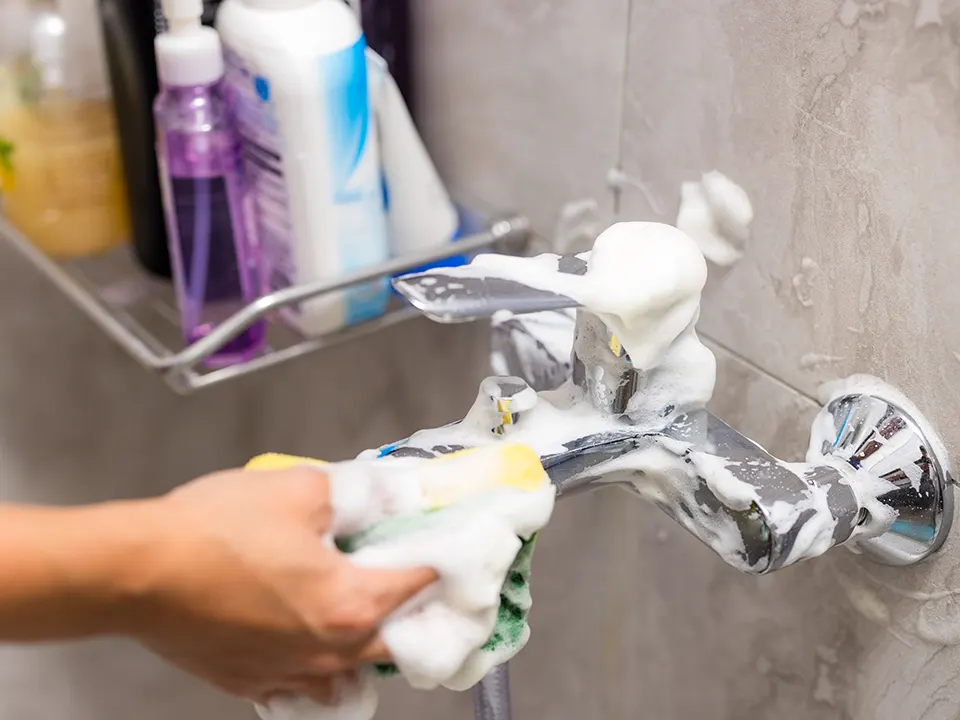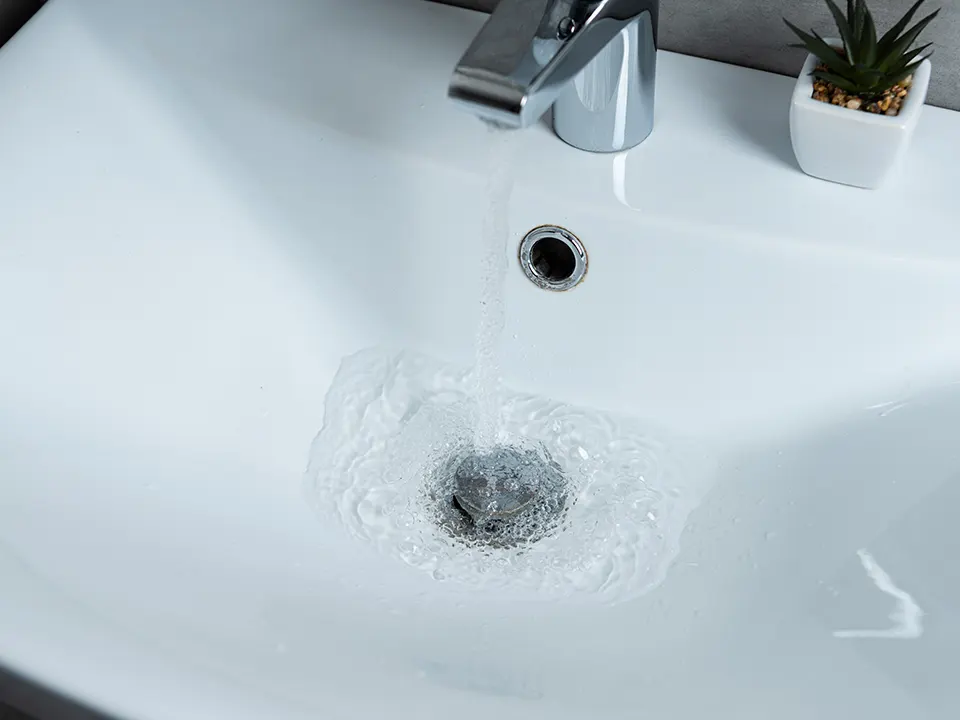
How to Fix a Leaky Faucet in 7 Simple Steps
November 29, 2024
What to Do When Your Toilet Won’t Stop Running
December 26, 2024Dealing with low water pressure can be frustrating. A weak shower, slow sink, or trouble filling the bathtub can throw off your entire day. The good news is that most water pressure problems are fixable, and you don’t always need to call a plumber. Let’s go over some easy solutions to help increase water pressure in your home.
Check Your Plumbing Fixtures
If only one fixture, like a bathroom sink or shower, is having water pressure issues, the problem is likely a buildup of minerals from hard water. Over time, these minerals can clog aerators and showerheads, restricting water flow.
To fix this:
- Use a wrench to remove the aerator or showerhead.
- Soak them in white vinegar for a few hours to dissolve mineral buildup.
- Rinse off the parts and screw them back on.
If this doesn’t work, replacing the aerator or showerhead might be the solution. However, if multiple fixtures are affected, there could be a bigger problem at play.
Look for Leaks or Blockages in Your Pipes
Leaks and blockages are common causes of low water pressure. Older pipes may leak or clog, restricting water flow and leading to pressure drops.
What to do:
- Inspect visible pipes under sinks or near your water meter valve for leaks. Look for damp spots or water pooling.
- Blockages are trickier to detect, but over time, rust, debris, and mineral buildup can clog pipes. If you don’t find leaks but still have low pressure, consider calling a plumber to inspect your pipes.
Adjust the Water Pressure Regulator
If your home has a water pressure regulator, it could be set too low, causing low water pressure throughout the house. The regulator controls the flow of water from your water supplier to your home and is usually near the main supply pipe or the shutoff valve.
To fix this:
- The ideal pressure is between 40 and 60 pounds per square inch (psi). If your pressure is too low, adjust the regulator to increase it.
- If you’re unsure how to do this or suspect a malfunction, consult a plumber.
Investigate the Water Supply from Your Water Company
Sometimes, low water pressure comes from issues with your local water supplier. It could be because of maintenance work, high demand, or other problems with the municipal water supply.
What to do:
- Check with your water company to see if maintenance is happening or if there’s a known issue in your area.
- If the low pressure only occurs at certain times, it may be because of peak water usage hours. Keep track of when the pressure drops and your water company may be able to help.
Check the Water Meter Valve and Shutoff Valves
The water meter valve controls the flow of water from the supply pipe into your home. If it’s partially closed, it could restrict the flow, resulting in low water pressure.
To check:
- Make sure the water meter valve is fully open. This can be an easy fix that can restore normal water pressure.
- Inspect the shutoff valves on plumbing fixtures (like sinks and toilets). Sometimes, these valves are accidentally turned down. This limits the water flow. Ensure that the valves are fully open to allow maximum water pressure.

Consider Installing a Water Softener
If you live in an area with hard water, minerals like calcium and magnesium can build up inside your pipes, showerheads, and faucets. Over time, this buildup can clog fixtures and restrict water flow, leading to low water pressure.
A water softener can help by reducing mineral buildup and improving water flow. It can make a significant difference in preventing future clogs and help maintain your plumbing system.
Consider Installing a Water Softener
It might seem odd, but high water pressure can also cause problems. If the pressure is too high, it can damage your pipes and plumbing fixtures, which could lead to leaks and drops in pressure later on.
What to do:
- If you think the pressure is too high, check the regulator. It might need adjustment to bring the pressure down to a safe level.
- Call a plumber if you're unsure about the pressure. A plumber can test it and make the necessary adjustments.
Flush Your Water Heater
Sediment can build up in your water heater over time, especially if you have hard water. This sediment can restrict the flow of hot water, reducing pressure.
To fix this:
- Turn off the water heater and let it cool down.
- Connect a garden hose to the drain valve and direct the water to a safe location.
- Open the valve and allow the water and sediment to drain out.
- Close the valve, refill the tank, and turn the heater back on.
Flushing your water heater can improve both water pressure and the efficiency of your hot water system.
When to Call a Professional
If you’ve tried all of the above and still have low water pressure, it might be time to call a professional plumber. Issues like hidden leaks, blockages, or damaged pipes are tough to diagnose without the right tools.
A plumber can inspect your entire system, including the water meter valve, supply pipe, and pressure regulator. It may be the case that the plumber needs to replace damaged pipes or perform repairs. This may cost more, but it may be the best and smartest way to restore your water pressure.
The Takeaway
Low water pressure doesn’t have to be a huge fix. You can usually find the cause and fix it yourself. As explained, check your plumbing fixtures, look for leaks, or adjust the water pressure regulator. If none of those solutions work for you, it is time to call in a professional plumber to get the job done and get your water pressure working again.
For expert help with water pressure issues or any plumbing concerns, contact Plumbing Pro & Drain.




